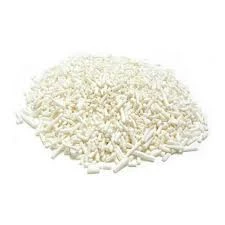
Current Trends in Monosodium Glutamate Pricing and Market Dynamics
The Price of Monosodium Glutamate Trends and Influences
Monosodium glutamate (MSG) has long been a popular flavor enhancer in various cuisines worldwide. Known for its ability to intensify umami flavors, MSG has found its way into many processed foods, snacks, and restaurant dishes. However, one aspect that often captures the attention of consumers and industry leaders alike is the price of monosodium glutamate. This article explores the trends, factors influencing the price, and the broader implications for consumers and producers.
Current Market Trends
As of 2023, the price of monosodium glutamate has experienced fluctuations, driven by various market dynamics. In recent years, global demand for MSG has increased due to a rising interest in Asian cuisine, the growing popularity of processed foods, and an increasing awareness of umami flavor profiles. Regions like Asia-Pacific dominate the MSG market, accounting for a significant share due to their culinary traditions that incorporate this flavor enhancer extensively.
However, the price can vary widely depending on geographical location, production methods, and economic factors. For instance, in North America and Europe, the price of MSG may be higher than in Asia, primarily due to import costs, tariffs, and varying regulations concerning food additives. As of late 2023, the average price of MSG has shown a tendency to stabilize, but with occasional spikes caused by sudden increases in raw material costs or logistical challenges.
Factors Influencing MSG Prices
Several factors contribute to the pricing dynamics of monosodium glutamate. One of the most significant is supply chain issues. Disruptions due to natural disasters, geopolitical tensions, or pandemics can lead to shortages, prompting price hikes. For example, during the COVID-19 pandemic, many manufacturing processes were halted, leading to supply constraints that pushed prices upward.
monosodium glutamate price

Another critical factor is the cost of raw materials. MSG is derived from the fermentation of starches, sugars, and molasses, and fluctuations in prices of these base materials can directly impact the cost of MSG production. For instance, if the market price of corn rises, it can lead to an increase in MSG prices due to the higher costs of fermentation.
Additionally, regulatory changes can also influence pricing. Stricter food safety standards or bans on certain additives in various regions can affect the supply and, consequently, the price of MSG. Manufacturers must adapt to these regulations, which often results in increased operational costs that are then passed on to consumers.
Implications for Consumers and Producers
For consumers, the pricing of MSG can affect purchasing decisions, particularly for those who are price-sensitive. While many consumers enjoy the flavor enhancement MSG provides, others may choose alternatives if prices become prohibitive. This shift could lead to changes in consumption patterns, affecting the overall demand for MSG.
From a producer's perspective, understanding the price dynamics of monosodium glutamate is crucial for long-term planning and competitiveness. Manufacturers often need to balance production costs with consumer demand while remaining compliant with regulatory guidelines. As such, companies may invest in improved production technologies or seek alternative sourcing strategies to mitigate rising costs.
Conclusion
In conclusion, the price of monosodium glutamate is influenced by a myriad of factors, including supply chain dynamics, raw material costs, and regulatory changes. As the global market continues to evolve, both consumers and producers must stay informed about trends and challenges associated with this popular flavor enhancer. Whether you're a culinary enthusiast or a food industry professional, understanding the pricing landscape of MSG is essential for making informed decisions in the ever-changing food market.
-
nitrile-rubber-honoring-strict-production-standardsNewsAug.22,2025
-
aspartame-ingredients-honoring-food-safety-valuesNewsAug.22,2025
-
fertilizer-for-balanced-plant-nutritionNewsAug.22,2025
-
cyanide-gold-processing-with-high-purity-additivesNewsAug.22,2025
-
formic-acid-in-textile-dyeing-applicationsNewsAug.22,2025
-
aluminum-hydroxide-gel-in-skincare-productsNewsAug.22,2025
-
Regulatory Compliance for Global Mining Chemicals UseNewsAug.12,2025
Hebei Tenger Chemical Technology Co., Ltd. focuses on the chemical industry and is committed to the export service of chemical raw materials.
-

view more DiethanolisopropanolamineIn the ever-growing field of chemical solutions, diethanolisopropanolamine (DEIPA) stands out as a versatile and important compound. Due to its unique chemical structure and properties, DEIPA is of interest to various industries including construction, personal care, and agriculture. -

view more TriisopropanolamineTriisopropanolamine (TIPA) alkanol amine substance, is a kind of alcohol amine compound with amino and alcohol hydroxyl, and because of its molecules contains both amino and hydroxyl. -

view more Tetramethyl Thiuram DisulfideTetramethyl thiuram disulfide, also known as TMTD, is a white to light-yellow powder with a distinct sulfur-like odor. It is soluble in organic solvents such as benzene, acetone, and ethyl acetate, making it highly versatile for use in different formulations. TMTD is known for its excellent vulcanization acceleration properties, which makes it a key ingredient in the production of rubber products. Additionally, it acts as an effective fungicide and bactericide, making it valuable in agricultural applications. Its high purity and stability ensure consistent performance, making it a preferred choice for manufacturers across various industries.





